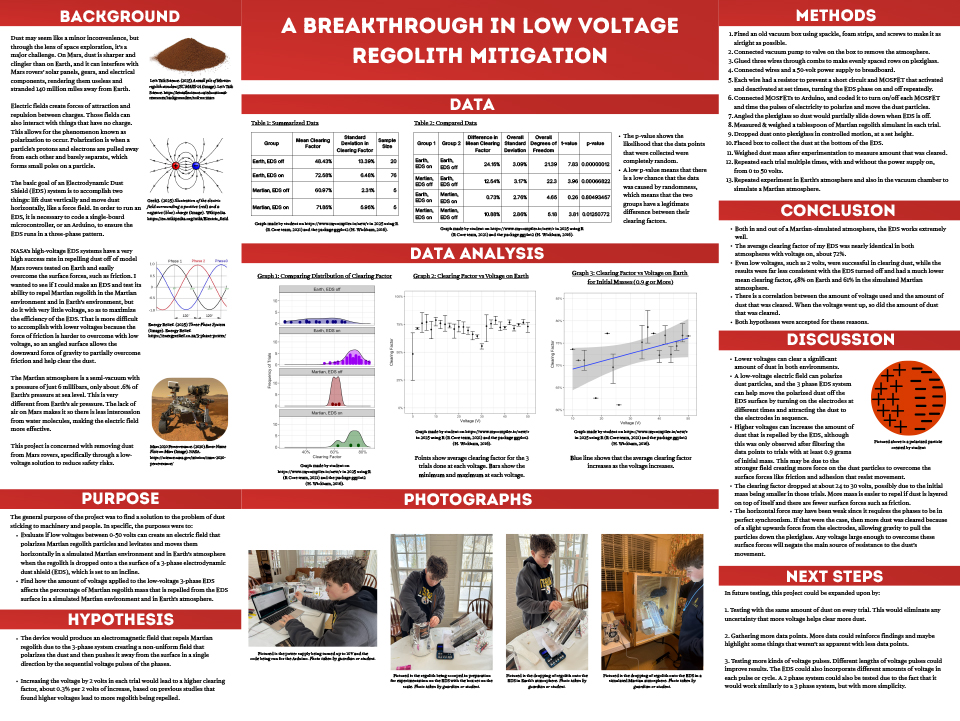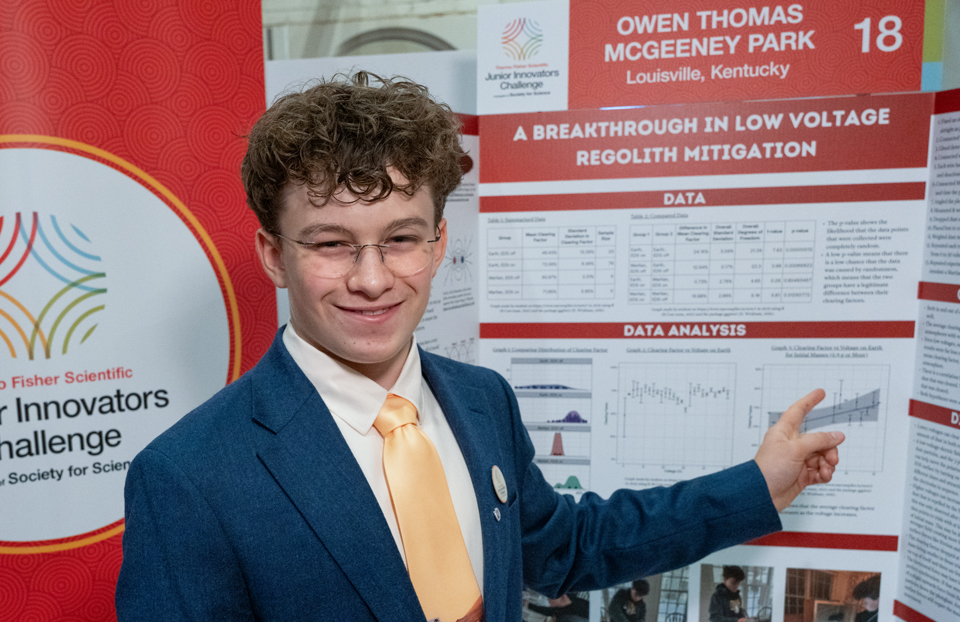Owen Thomas McGeeney Park
7th Grade, Saint Francis of Assisi Catholic School
Louisville, KY
A Breakthrough in Low-Voltage Regolith Mitigation
View Poster
Project Background
Owen is concerned about dust. Martian dust, specifically. The Red Planet is very dry and covered in regolith — loose rock and dust. That dust will cling to machinery that lands there — and people, too. Martian rovers must contend with dust that gets into their gears and coats the solar panels that provide them with power. “My project this year aimed to solve the problem of dust adhering to rovers,” Owen says.
Tactics and Results
“I found that the most effective way to do this would be to build an electrodynamic dust shield, or EDS, but I then found that NASA had already done it,” Owen says. EDS uses an electrical field to lift dust away from surfaces. But then Owen learned that the EDS NASA currently uses needs 2000 volts of electricity — about what it takes to power a microwave. He wondered if he could do it with lower voltage. He set up his own electrodynamic dust shield with combs, plexiglass, wires, and glue, hooked up to a small power supply. He found that at only two volts, his EDS could clear 71.21 percent of dust dropped in normal Earth atmosphere, and 71.43 percent of dust in a vacuum chamber he used to simulate Mars. At 50 volts, it cleared 73.06 percent of Earth dust and 76.92 percent of dust in his Mars simulation.

Beyond the Project
Owen likes physical sports like swimming and volleyball, but he also likes mental sports like chess and cubing — racing to solve Rubix cube-like puzzles. He also likes playing the card game Magic: The Gathering with his friends. He would like to be a physicist. “I love how everything fits together when you try to connect them and how there are so many things that we still don’t understand,” he says.

